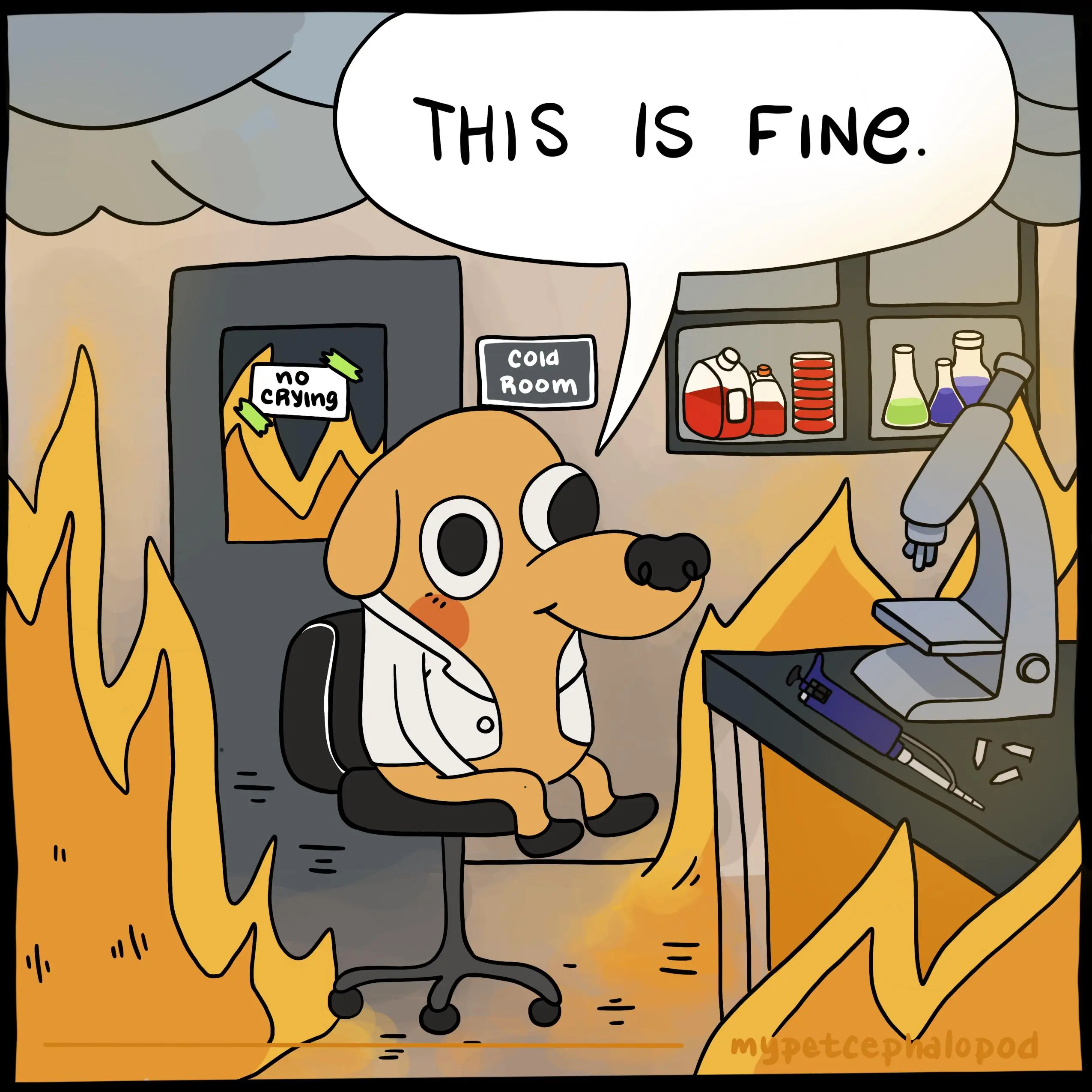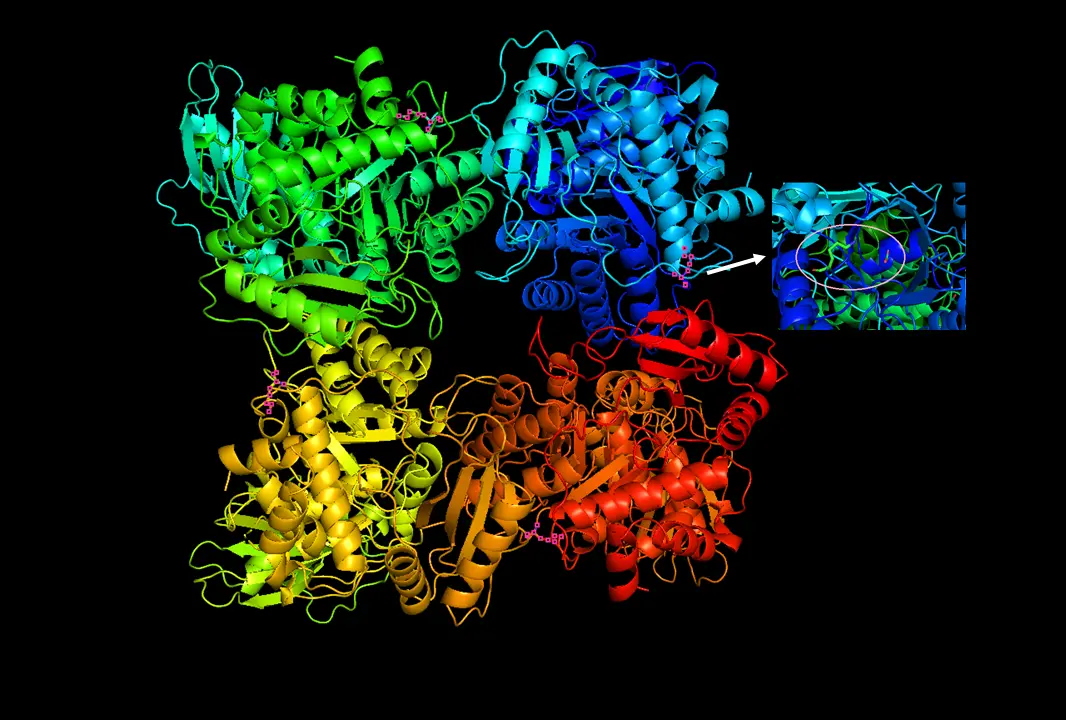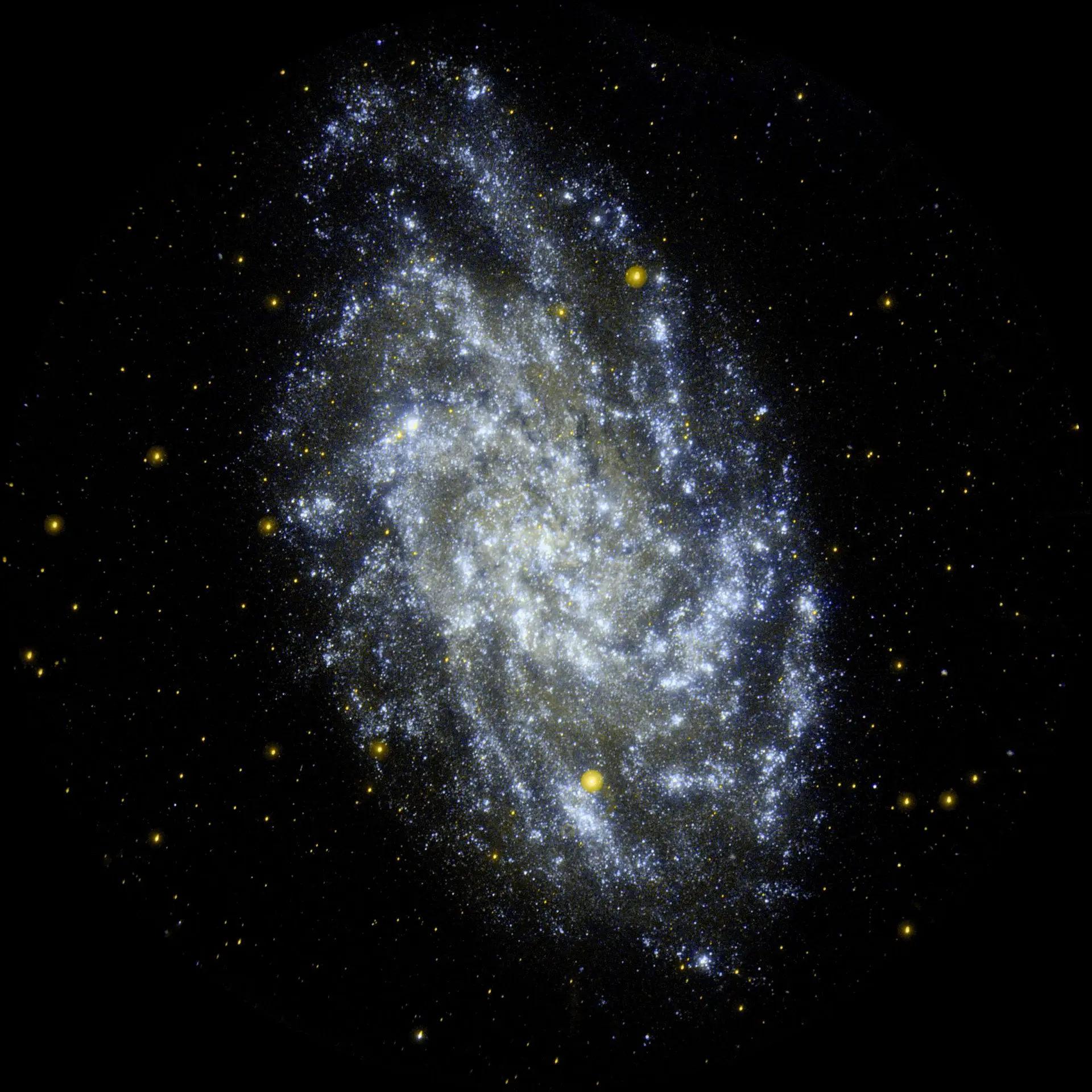
So. When I was in my junior year of college, the dorm I lived in was built more like a high occupancy apartment rather than a college dorm room, it had a living room and a kitchenette. No built-in stove but we were allowed to have a hot plate, so I went to K-Mart and bought a double burner one.
For some reason, one of my roommates had a cereal bowl that was in the shape of a saucepan. It was made of plastic, but it was black and had a handle. One day I walk into the apartment to an ungodly chemical smell and exactly the image above.
Probably the plastic “pan” was a children’s toy that made its way into an alternate use. I probably still have a few lying around from the toddler days.
This was bigger than most children’s toy pans I’ve seen; it could probably have held a quart of water. It was used as a cereal bowl at least once.
Yup meltdowns happen sometimes. AND there’s the century-long legacy of radioactive waste!
Oh joy, I get to bust out these bad boys again! https://www.youtube.com/watch?v=4aUODXeAM-k https://www.youtube.com/watch?v=lhHHbgIy9jU
There’s also that one guy who touched the hot part and is now using that tiny blister to conduct a decades-long smear campaign against the kinds of pots used at Three Mile Island.
kyle hill is interesting to me because when he is making videos about nuclear it is either the most terrifying nuclear horror story yet or facts and statistics about how safe nuclear is. I personally believe nuclear to be a super safe and efficient way to create energy, its just something I noticed. Makes me think about how common coal accidents are and how little they are covered compared to something supposedly scary like nuclear.
Nuclear has the same problem as aviation, by average it’s many many times safer than most alternatives, but any time something goes wrong it has a high chance of going extremely wrong and making an international scene. So it’s generally safer but every accident makes world news.
I agree. We should deal with nuclear waste in the same way we handle the waste from other fossil fuels: by spreading it over the entire planet in a thin, even coating so that everyone is equally affected!
Back in middle school, our science teacher decided to make the class do a debate about different types of energy sources in order to learn about their advantages and disadvantages. I was on the pro-nuclear team, and we were wracking our brains trying to come up with a rebuttal to “but what about the waste?” until some madlad basically came up with this great argument:
We can just dump all of the nuclear waste on Belgium. It will take a really long time before it fills up, and nobody cares about Belgium anyway
The anti-nuclear team had no good response, and we actually got a point for that argument because we looked up the relevant statistics (nuclear waste output, belgium surface area, etc.) and calculated exactly how long it would take to turn belgium into a radioactive wasteland.
There’s a really simple answer to the waste problem though. And it’s super, blatantly obvious.
All nuclear material is basically ground up rocks that we dug out of a hole and then filtered the spicy bits out of. So grind it back up, pour it into concrete and stuff it back down the same hole it came from. Of course, you can’t legally do that, but that’s only because we have a ton of rules what constitutes safe disposal, etc. Recreating the original conditions basically meant you’re (re)creating something unsafe, but we do that in a LOT of places.
EDIT: For example there are regions in Belgium and the Netherlands where there is so much naturally occuring arsenic in the ground, that if you scoop a bucket full of dirt, walk 50 meters across the provincial border and put pour it out, you’re comitting (at least) three different crimes. That’s legally valid, after all, the bucket contains polluted material, but practically nonsense since you literally just picked it up, and it’s been like that long before people ever got there.
fair argument
I want to add something to it:
First of all, a lot of that uranium seems to have been there and slowly decaying for a long time. I think, what we humans did was to “wake it up” and turn it into some more violently-reacting other elements, for the sake that we get the energy out of it at an acceptable pace. Now, though, it’s severely more dangerous than it was before.
Also, I’ve an idea about what to do with the waste: Since the waste tends to activate itself due to neutron activation, put a lot of it (but just barely not enough to make a bomb) together and it will activate itself to react violently at very high speeds, but just barely not fast enough to explode (make a bomb). That way, you can get a lot of heat out of it rather quickly, and are left with burned-out material (which contains less radioactive potential).
First of all, a lot of that uranium seems to have been there and slowly decaying for a long time. I think, what we humans did was to “wake it up” and turn it into some more violently-reacting other elements, for the sake that we get the energy out of it at an acceptable pace. Now, though, it’s severely more dangerous than it was before.
it’s weird, but it’s not “more violent” it’s just more energetic. Either through enrichment, making it more potent, which is an industry standard across the entire western world. Or through making fertile material, like uranium 238, fissile by going through the decay chain until it becomes something more spicy, like pu 239 or whatever.
The big problem is that the energy it releases is definitionally incompatible to human life. That’s the ONLY problem.
oh and btw, nuclear reactors are physically incapable of “going critical” it’s physically impossible. 90% of the concern is it breaking containment from being really fucking hot, which is notably, really hard to deal with.
Or through making fertile material, like uranium 238, fissile by going through the decay chain until it becomes something more spicy, like pu 239 or whatever.
Yeah that’s what i meant.
century-long legacy
At least millenia, might be epochs (million years) …
Though if Chernobyl is any indication in a few decades nature works its way around it.
The dangerous radiation disappears much much sooner then that. And if its millions of years, the local life would adapt, more then it already has. Interesting related info: https://en.m.wikipedia.org/wiki/Radiotrophic_fungus
Interesting link, thanks. Also, radiotrophic fungus is speculation at this point and has never been found in nature.
You’re so right - we should just pump all our crap out into the biosphere instead and keep burning coal.
Solar and wind are currently both cheaper than coal, and rapidly getting cheaper.
Nuclear is more expensive, and the cost is growing. There will be almost certainly be no private investment in nuclear in the future unless it’s ideologically driven.

https://en.m.wikipedia.org/wiki/Cost_of_electricity_by_source
Come on let’s get some price breaks on the solar towers!
I totally know what solar towers are

almost certainly no private investment in nuclear in the future
I too refuse to read any news, ever, if it doesn’t support my viewpoint. Definitely no current investments in nuclear at the moment.
I like wind and solar! They’re not the whole of the solution for the whole globe though. There’s no reason to keep spreading the fossil fuel industry’s propaganda for them.
Sorry, I meant to say new private investment
Nuclear is more expensive, and the cost is growing. There will be almost certainly be no private investment in nuclear in the future unless it’s ideologically driven.
even if this is the case, i still think it’s a good idea to at least invest in research and development in nuclear fission, which might even help fusion down the road. Not to mention it’s always good to have alternatives. Would be a shame if we found out that solar panels are actually the new asbestos or something silly.
The only problems with solar are incoming president McFuckface’s tariffs, and AI’s propensity to use every goddamn moving electron in the world.
the AI problem is irrelevant to solar. The tariffs definitely don’t help, plus we already have a raw materials import ban from china as well, so that’s cool.
Really doesn’t help that china has basically an entire market monopoly on rare earth materials.
Luckily waste storage is a solved problem.
Drill hole in bedrock, put waste in hole, backfill with clay.
Drill hole in bedrock, nuclear waste falls into the void and despawns, problem solved
How’d you get a photo of my stove top from tonight?
And that pot looks iron!
The infamous elephant’s foot
Most of our power generations comes from “make water hot, hot water boils into steam, steam spins magnet”
Nuclear power is just a different source of heat.
Only alternatives that I’m aware of:
- solar cells (converting photon energy into electricity)
- acid batteries (converting chemical energy into electricity)
- peltier devices (converting heat differential energy into electricity)
- induction (converting electrical energy into electricity on a different circuit)
- bioelectricity (using biochemical energy to produce electricity)
- static buildup (using friction between various materials to produce a voltage differential)
I think there’s a way to use lasers to generate electricity, too.
Piezo converting pressure or vibration to electricity
I think it’s note-worthy that while the list is long, only 3 of them are practical to supply/regulate electricity on a large/industrial scale: solar, spinny things, and acid batteries.
We use all three of them in today’s and in the future’s electricity network.
Producing acid batteries, or any batteries isn’t power generation. It’s turning chemical potential (which was generally produced in an energy-consuming process) into a storage device for electrical potential.
Induction is just changing the properties of your electricity, not generation.
They are all just ways of converting energy from one form into electricity. Every single one of the ways we “generate” electricity ultimately comes from gravitational energy. By the time we use it to power electrical circuits, it all has gone through various energy-consuming/losing processes.
The list wasn’t so much a “ways to create electric energy that aren’t spinning turbines” as a “power sources for electric circuits that aren’t spinning turbines”, which is why I included chemical and electrical, even though they often aren’t very useful without another source of electric power.
Fair enough. As you said, none of these are net producers of electricity if your thermodynamic system is big enough to count as closed.
I think there’s a way to use lasers to generate electricity, too.
i’ve read some really cursed direct photonic conversion theory from nuclear energy. It’s uh, novel. Definitely a pipe dream though.
It’s all variations of “make things spin.”
Either by heating up water so steam makes thing spin, using wind to make thing spin, or moving water to make thing spin.
I am willing to bet if you watched photo cells on solar panels under a microscope, the light would make something spin.
Electrons are suspiciously close to spinning dynamos, so even just moving electrons might be considered spinning something.
I am willing to bet if you watched photo cells on solar panels under a microscope, the light would make something spin.
Nope, solar cells are solid state devices. ;)
Other examples of solid state electronic devices are the microprocessor chip, LED lamp, solar cell, charge coupled device (CCD) image sensor used in cameras, and semiconductor laser.
Nope, solar cells are solid state devices. ;)
except for the fact that you actually want a grid tied interia component for stability.
So even in that case, you still tangentially need a “spinning mass” even if emulated in software with how it supplies energy to the grid. It’s still technically there.
Have you considered supercapacitors could be used for that?
Honestly the easier way to switch from solar DC to grid AC is to just have a flywheel between the grid and the solar power plant. It might not be as efficient as a capacitor bank or super capacitor bank but it’s dead simple to implement and it’s extremely reliable.
ideally you wouldn’t want it in between, but beside, you would implement it as a “frequency smoothing” device, along side production, probably at a factor of regulation specified amounts.
Modern solid state conversion is very efficient and highly effective, it’s just not great at the inertial problem, though it can be mitigated. It’s just not as clean.
that’s still just inertia though…
Now just using the complicated AC coupling of DC energy, through complex electronics…
All when you could just, big motor with massive mass spinny real fast like, and then when the mass starts spinning the motor, it makes power.
Mechanically, it’s probably both cheaper, and more cost effective to just use a flywheel, which is literally going to be an inertial system.
We’ve had this discussion here on lemmy a few days ago: practically all electricity generation is by making turbines spin.
Hydropower means river makes turbine spin. Wind power means wind makes turbine spin. Coal/gas power means combustion makes turbine spin. Nuclear means hot steam makes turbine spin.
However, that doesn’t mean that all electricity sources are spinny things.
- solar cells have no mechanically moving parts
- batteries utilize chemical energy directly
solar cells have no mechanically moving parts
ironically, large grid tie systems are starting to “emulate” the spinning mass behavior of turbine generators, since there’s an exponential failure issue waiting to crop up if you aren’t careful, as texas has already learned, a very significant part of your solar generation can just, go offline, if it decides grid conditions aren’t suitable, which can lead to LARGE drops in power production and frequency, which is likely to kill even more generation.
So the solution is to make it emulate the physical mass tied to a turbine, or at least, more generously provide power in fault like conditions, to prevent this sort of exponential breakdown of the grid. You could of course, use a large spinning flywheel to regulate grid frequency, as is being used in a few places right now. I’m not sure how popular that is, outside of wind energy. It’s likely to get more popular though.
weird little side tangent, but the frequency of electricity on the grid is essentially directly tied to the rotational speed of all turbines currently on the grid, meaning there is a very large inertia in the grid frequency, it’s weird to think about, but makes perfect sense, and it provides for an interesting problem to solve at large scales like this.
Batteries are really fucking cool btw, the fact that you can just chemically store electricity, and then use it, is really fucking crazy. The fact that it’s the most accessible technology is also insane to me. But maybe it’s just the adoption being the way it is.
I think people underestimate the value of intertia in power generation. I liken it to the way capacitors regulate voltage changes or coilovers absorb bumps and vibrations.
The inertia of the generators connected to the grid helps stabilize frequency changes caused by blackouts, power plant issues, etc. by resisting and thereby slowing down frequency decline. It buys time for grid operators to find a way to balance loads in a way that doesn’t weaken or disable the grid as a whole.
Here’s a great NREL report explaining how this all works, and what other systems we use to stabilize grid frequency.
I think people underestimate the value of intertia in power generation. I liken it to the way capacitors regulate voltage changes or coilovers absorb bumps and vibrations.
the best way to think about it is a literal flywheel, because that’s what this is, just at a grid scale, and directly tied to the frequency.
The inertia of the generators connected to the grid helps stabilize frequency changes caused by blackouts, power plant issues, etc. by resisting and thereby slowing down frequency decline. It buys time for grid operators to find a way to balance loads in a way that doesn’t weaken or disable the grid as a whole.
TLDR it moves the “OH SHIT OH FUCK” window from about < 1ms worth of time in the worst cases, to the much more manageable, seconds window.
It’s a potential challenge with moving to renewables, but not a significant one, i think. This is also a big advantage to having sources based on thermal generation, like nuclear.
Also, solar trackers are a big deal for large farms when you start to scale above residential. Those trackers physically moving the panels to optimize generation are moving pieces.
I dont think this is true.
this is sort of true, it depends on the array, but from what i understand, unless you’re doing an experimental array, it’s most common to just use fixed axis mounted panels, it’s much cheaper and more cost effective that way. Ideally you would use a tracking array, which is better, but more complicated, and requires significantly more maintenance and investment. Single axis tracking arrays might be a clever solution to this problem though.
Regardless, it’s not relevant to the grid inertia problem at hand.
to be fair ; its both.
It is not the top one in the typical usage of the word “nuclear energy.” Sure, it is nuclear energy, but that normally refers to electrical infrastructure, not nuclear weapons. Nuclear electricity is pretty much always just heating water up in a safe and controlled manner, and using that to spin a turbine.
deleted by creator
Until something goes wrong and it is not safe and controlled anymore. You know, because of the whole exponential chain reaction thing.
So do you still believe in bloodletting to cure colds or the earth being 10,000 years old?
or the earth being 10,000 years old?
Humanity, or at least written scripture, is roughly 10,000 years old. So if you take humanity = earth, then yes it’s approximately true. But also, it’s an incredibly egoistic viewpoint because earth is not just humanity.
Edit: by humanity, I mean human culture and not so much human biology.
so basically, if you define a leaf as a caterpillar, it’s basically the same thing, got it.
yeah, you got it!
sick
Nuclear plant accidents have happened tho. Remember Fukushima? It was 13 years ago, not that long. It didn’t strait up explode like a nuclear bomb, and neither did Chernobyl, but still; contamination is a pretty big deal. You can argue that the risk isn’t that bad or that fossil energy plants also have risks; but you can’t just dismiss it as a superstition.
The idea of an explosion is. That’s what this thread is about. It’s not just about meltdowns, which, like you said, is very low risk, and lower than ever from what we’ve learned in the past.
Modern reactor designs have no such problem, hence the reference to ancient science.
Fukushima? It was 13 years ago, not that long. It didn’t strait up explode like a nuclear bomb, and neither did Chernobyl, but still;
fukushima was a BWR design, put on the coast of a place known for having tsunamis, and wasn’t properly equipped with emergency generators (they flooded, oopsies) which they couldn’t get to, in order to service the reactor, due to the roads being fucking yeeted.
Literally any other plant on earth is going to have a better outcome.
My parents have witnessed not one but two nuclear catastrophes in their lifetime. Wtf are you talking about?
how many cancers have they witnessed from the likes of coal power? Or things like asbestos? Shit like arsenic, or worse, lead. They probably have a significant IQ drop from leaded fuel, assuming they’re american.
Sure, nuclear energy is valid and all, but you sound like an absolute spanner…
If you want to argue that nuclear energy has its place, maybe don’t ridicule people who remember how much of an issue the last major nuclear meltdown was (and partially is).
deleted by creator
meltdowns do not resemble bombs at all. nor are they really possible either.
On a world where everybody is effraid of nuclear power, station safety is really overboard, and nuclear is super safe.
If everyone accepted nuclear power the same way we accept cars, then you can be sure capitalism would cut corners on nuclear safety…
(Source: many of my clients are nuclear power plants people)
sure, like corners are cut in every industry including renewables (which have a higher accident rate even). yes a nationalized nuclear power program is less perversely incentivised. if you look at countries where nuc is accepted more you wont find insane accident rates nor are plants bombs.
I heard that Fukushima was problematic because non-engineers thought it would be easier cheaper?) to put some of the critical infrastructure near the sea rather than on the hill…
I heard that Fukushima was problematic because non-engineers thought it would be easier cheaper?)
fukushima was problematic because literally everything in the chain of safety that should’ve happened, either didn’t or was ignored, due to callous stupidity.
If literally any one thing had gone differently, there’s a good chance it wouldn’t have been that bad.
that is believable, no structures should have been where fukushima was nor with the lacking tsunami protections it had.
If everyone accepted nuclear power the same way we accept cars, then you can be sure capitalism would cut corners on nuclear safety…
and yet, cars keep getting safer, and safer every year, they also keep getting larger, and more expensive and harder to repair, but they do get safer.
Interesting.
To be complete, you can’t ignore the dangers of nuclear power plants in a war setting. It sucks but it is what it is.
To be honest, every large power generation systems is critical is a war setting… Don’t tell them about hydro dams!
Critical? Yes but there are a few different kinds of critical. Critical to the power supply? Ofc. Critical as in potential environmental disaster? Some, dams are 1 example.
Sometimes transportation is the cause of the potential of an environmental disaster like gas pipes. Those are a potential wildfire. Tbh, badly maintained high voltage over the ground wires have caused huge disaster too.
Energy is dangerous by nature. But some are more abusable and have longer term consequences than others. In a war setting, you have to assume abuse and plan with the consequences in mind.https://en.m.wikipedia.org/wiki/Zaporizhzhia_Nuclear_Power_Plant_crisis it is a reality.
Station safety is so overboard, that we only had like three meltdowns or so, and only some hundreds of thousands of people killed by premature cancer deaths as a result of them and some million or so permanently displaced.
But surely after the next event we will have learned and then it will be totally safe. Like they said after Three Miles Island. And like they said after Chernobyl. And like they said after Fukushima.
killed hundreds of thousands
more like a few thousand ever, if you are really really conservative tens of thousand, though the methodology to get there is unscientific. tmi killed nobody, fukushima will have killed nobody. meanwhile people falling off roofs installing solar or accidents working on wind are much more common. keep doing solar and wind, but your perception about nuclear is wholly irrational and unfounded.
have we built and RBMK reactors since chernobyl? Have we built and confusing and badly maintained reactors since TMI (that weren’t legally operating btw) have we built any BWR reactors in bad places, with no concern for safety since fukushima?
Did people during the concept and design phase of these anticipate them causing disasters?
Did the people who operate them adhere to best safety practices, maintenance and regulations?
Did the regulatory authorities ensure that there would be no disaster possible through enforcing said regulations, in particular regarding location specific concerns such as Tsunamis in Fukushima?
As long as you have the same human characters in the same economic structures in the same administrative structures, there is no reason to be confident, that these disasters will not happen again.
Chernobyl was a ridiculous level of negligence on the part of the technicians working at a plant with a very unsafe design.
Fukushima was a reasonably safe reactor design with terrible (and noted as such decades before the meltdown) site designs which could be described as “designed to fail”.
You could argue that lessons have been learned from both of those, and Three Mile Island, and safer designs are the result. Or you could argue that Fukushima clearly shows that people shouldn’t be involved in such high-risk projects because they will cut corners that will inevitably lead to disasters. If the second is your stance, take a look around. There are plenty of projects with similar risks in other fields all the time.
There are plenty of projects with similar risks in other fields all the time.
Then name three examples please, that have a Chernobyl level of risk.
Coal power plants release more radioactive waste in the environment than nuclear stations.
I’m not sure if this statistics includes meltdowns, but considering their rarity, it may still be true.
Which is why both technologies need to be abolished asap and replaced with cheaper and sustainable renewable energies.
That must be why it’s still advised to not collect and eat wild mushrooms in parts of southern Germany.
Also I didn’t say they resembled bombs.
did i claim chornobyl didnt have any effects or are you just searching for stuff to argue about?
that’s the thing though, the exponential chain reaction isn’t possible.
The problem is that when fuel breaks the strictly controlled fuel rod environment, it stops being cooled properly, and regulating it becomes more interesting (not impossible, there are some clever solutions out there, look at metal cooled reactors for example) and as a result, the spicy particle generation tends to break containment, which is why we have things like PCVs, which contain the corium long enough to at least prevent the elephants foot troll, which is then contained by the secondary containment (the building around it) which is also contained by the rest of the building, surrounding the containment building.
It’s pretty hard to fuck up a reactor. Even harder when the idle state of the reactor is safe, as is with metal cooled reactors. Those are some of the most promising designs, because you can literally just do nothing with them, and nothing bad happens.
That’s just another way to turn heat into electricity. Those thermocouples could also be used on a campfire.
You think that’s hot shit: https://www.sciencedirect.com/science/article/abs/pii/S2468606921000538
In theory, if you made it small enough, you could make a gamma rectenna. Considering gamma rays are often smaller than an atom, you’d have to make the antenna out of something other than atoms though. Good luck.
that’s just a modified Peltier device :)
This exists, but it’s generally only used in spacecraft.
Most terrestrial uses of RITEGs have resulted in tragedy.
Water is last year’s news. Helium is the new water now.
Hot salt is where it’s at
Are there any molten salt reactor designs that do not use water as a coolant?
Molten salt reactors use salt as the coolant
Maybe the primary coolant but all the designs i’ve seen so far use water for the secondary coolant / working fluid.

Humans only have one good way to turn hot into lightning.
Spicy rocks make water hot.
i mean… This is how most electricity production works.
Hydro, solar, wind…
hydro works in the exact same way, just with water instead of steam, solar works using PV technology, so it’s fairly novel.
And wind is basically the same thing, just using the air, instead of steam.
It’s all mechanically the same at the end of the day, excluding solar. The primary difference is that we don’t burn fuel for heat to make steam, we use potential, or kinetic energy from our environment instead.
Also to be clear, if we’re being pedantic and nitpicky, when i say most i mean percent of production. The vast majority of production globally is through coal, oil, and natural gas. All using thermal processes. And some nuclear, though not as much as solar/wind though.
Project PACER:
If it hasn’t been already said: the issue is public perception. If you ask any American in the street what they relate to nuclear power the majority will tell you: Chorynobyl. Even though anyone that’s looked up anything knows that technology is leaps ahead of that disaster, that’s the fear mongering that everyone jumps to.
The half life of fall-out from the Hiroshima and Nagasaki bombs was a couple of decades.
The half life of nuclear waste from powerplants is anywhere from thousands of years to millions of years, depending on the mix of isotopes.
anywhere from thousands of years to millions of years
only in a strictly thermal reactor environment, if you’re using a fast reactor, something like the SSR that is currently being worked on in canada, it can both burn waste, and reduce it’s lifespan to a much more reasonable length.
As always, development is the problem, if we had more energy being focused on this, we would be farther along, but such is scientific development.
Don’t feed the troll. It won’t come back, it’s too expensive.



















